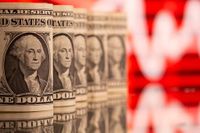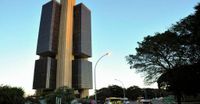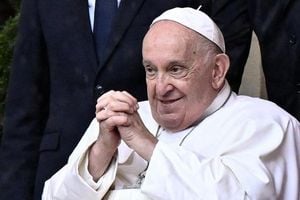The Brazilian economy is navigating a complex landscape as the latest Boletim Focus, released on April 7, 2025, reveals a significant adjustment in the projections for the U.S. dollar exchange rate. Economists and market analysts consulted by the Central Bank have lowered their forecasts for the dollar for the fourth consecutive week, now estimating it to close 2025 at R$ 5.90, down from R$ 5.92 just a week prior. This downward trend reflects ongoing fluctuations in the currency market, which has seen the dollar's value dip since early March.
In recent weeks, the dollar did experience a brief surge, closing at R$ 5.835 on April 4, 2025, driven by rising uncertainties linked to new import tariffs announced by the United States. This sharp increase, however, was short-lived as the overall trajectory remains downward. The market's revised outlook for 2026 has also been adjusted, now projecting the dollar to be valued at R$ 5.99, a decrease from the previous estimate of R$ 6.00.
Despite these changes in currency projections, other economic indicators have remained stable. The Boletim Focus maintains its estimates for the National Consumer Price Index (IPCA) at 5.65% for 2025, which is notably above the Central Bank's target of 3%, with a tolerance limit of 4.5%. For 2026 and 2027, the inflation estimates are also unchanged at 4.50% and 4%, respectively.
The Gross Domestic Product (GDP) growth forecast for this year stands at 1.97%, with projections for 2026 and 2027 remaining at 1.60% and 2%, respectively. This stagnant growth reflects the broader economic concerns amid fears of a global recession, particularly following the trade tensions exacerbated by U.S. tariffs.
Gabriel Galípolo, the President of the Central Bank, recently emphasized the impact of monetary policy on the economy, noting that the Central Bank has raised the Selic rate by three percentage points in recent months. This increase has been aimed at curbing inflation and consumption, with the Selic currently set at 14.25% per year, the highest level since 2016. Analysts project that the Selic will end the year at 15%, consistent with estimates held for the past 13 weeks. The forecasts for 2026 and 2027 remain at 12.50% and 10.50%, respectively.
The adjustments in the dollar's value and economic forecasts come in the wake of President Donald Trump's announcement on April 2, 2025, regarding the implementation of a minimum tariff of 10% on all U.S. imports. This decision has triggered a wave of uncertainty among international trading partners, with both China and the European Union signaling potential retaliation. The escalating trade war has raised concerns about its impact on global economic stability, further complicating Brazil's economic outlook.
As the Central Bank continues to navigate these turbulent waters, the Boletim Focus serves as a critical tool for understanding market expectations and economic trends. Since its inception in 2000, this weekly report has provided insights into the projections of economists and market operators, helping to shape financial strategies and policy decisions.
In summary, while the Brazilian economy grapples with decreasing dollar projections and stable inflation and GDP estimates, the looming threat of a global trade war adds an additional layer of complexity. As market analysts keep a close eye on these developments, the coming months will be crucial for determining the trajectory of Brazil's economic recovery.





